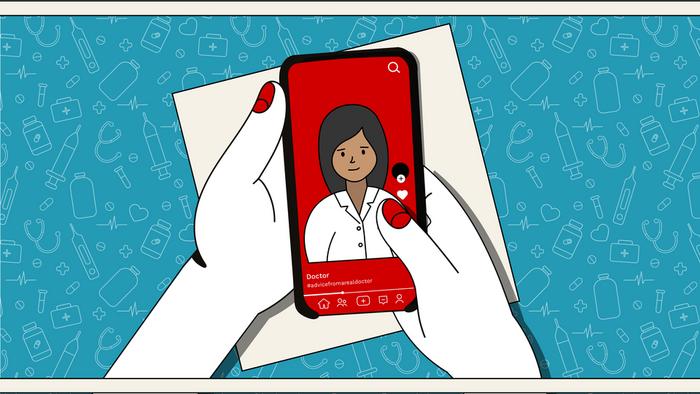TikTok and other short-form video platforms are booming in popularity — for entertainment and for sharing information, including health information.
Researchers are currently examining the effects of social media videos, and among them is Ciera Kirkpatrick, assistant professor of advertising and public relations at the University of Nebraska–Lincoln. Kirkpatrick, who studies the intersection of communication and health, recently turned her scientific eye toward TikTok.
In a newly published article, Kirkpatrick and co-author LaRissa Lawrie, a doctoral candidate at the University of Missouri, examined the effectiveness of TikTok videos to inform and encourage women to get a pap smear — the gold standard for screening for cervical cancer, which kills about 4,000 women per year in the United States. The scholars found that overall, short-form videos can be a good tool for informing and encouraging women to get regular pap tests.
“With TikTok, there have been a lot of news reports about how people, especially Gen Z, are using the platform as a source for health information,” Kirkpatrick said. “(My co-author and I) noticed that there was a lot of health messaging regarding pap smears, which are a really important preventative measure for cervical cancer. We were fascinated by what was being shared, and then we also found out that there has been a decline in the number of women in the U.S. who are getting a pap smear.”
Regular pap tests are a crucial piece in the prevention of cervical cancer because the disease often develops without symptoms. Pap smears are recommended every three years in most populations by the American Congress of Obstetricians and Gynecologists. In recent years, more women are skipping their pap tests. Overdue cervical cancer screenings jumped from 14% of women in 2005 to 23% in 2019, according to the National Institutes of Health.
In the study’s experiment, 636 females, aged 21-29, viewed videos that simulated those on TikTok about pap smears, varying in source (doctor or peer) and level of autonomy support — using either controlling/demanding language or language supportive of one’s choice. They then rated the videos for perceived message effectiveness, credibility, attitude toward message, and engagement intention.
They found that doctors were deemed more credible than peer sources, and that autonomy-supportive videos delivered by a doctor improved attitude toward the message and toward getting a pap test more than the peer videos. Regardless of source, autonomy-supportive messages were significantly more likely to receive engagement in the form of likes or shares.
“While autonomy support didn’t have a direct effect on their behavioral intention to get a pap smear, it helped with the engagement factor, which could lead more people to being exposed to the message,” Kirkpatrick said. “That’s important because the literature on pap smear rates has shown that one of the key reasons why women aren’t getting pap smears is because they simply don’t know that it’s something they should be doing. Getting that information in front of more people through engagement with a video can help overcome that barrier.”
Kirkpatrick said the results provide evidence that doctors creating short-form video content about pap smears is time well spent, but that peer messages play a role, too.
“People want to hear from credible sources with expertise and experience, but then they also want to see videos from people who are like them — hearing a perspective and relating to it,” Kirkpatrick said. “Both source types have value to people. They’re a little bit different, but both overall seem to have a positive effect.”
Kirkpatrick suspects the findings would translate to videos encouraging other preventative screenings and said that should be explored further. Currently, Kirkpatrick is also examining why more young women are turning to TikTok for health information.
“We’re hoping to better understand the motivations for using TikTok as a health source and what their perceptions are of the information they’re getting,” she said.
Journal
Health Communication



































